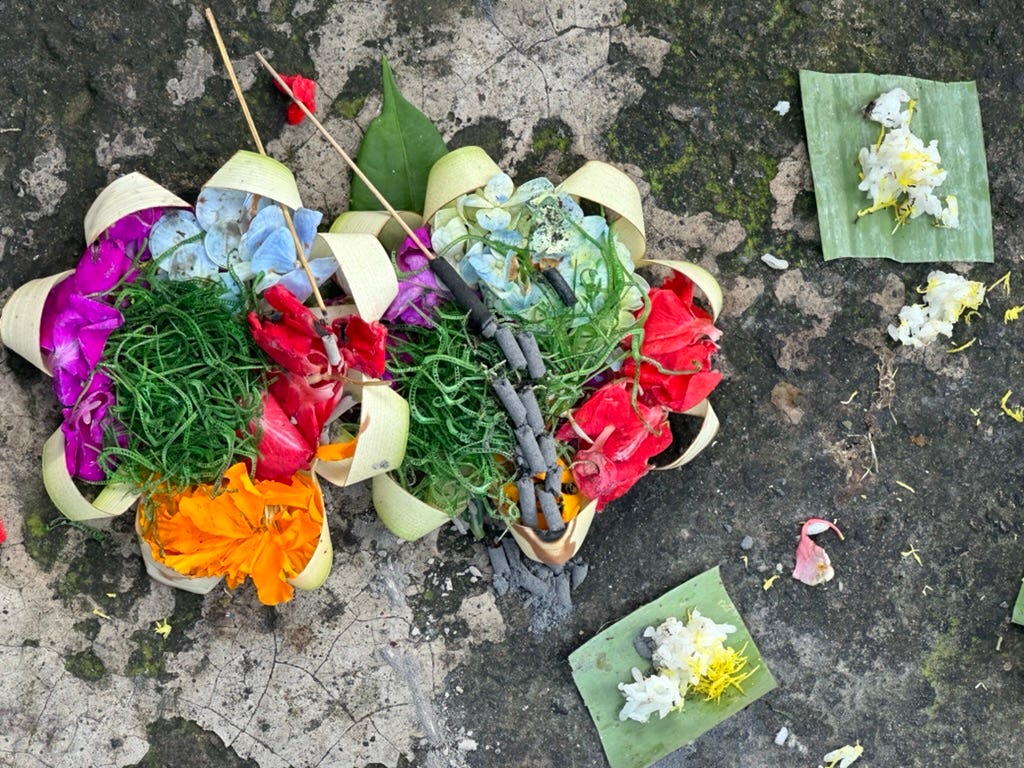
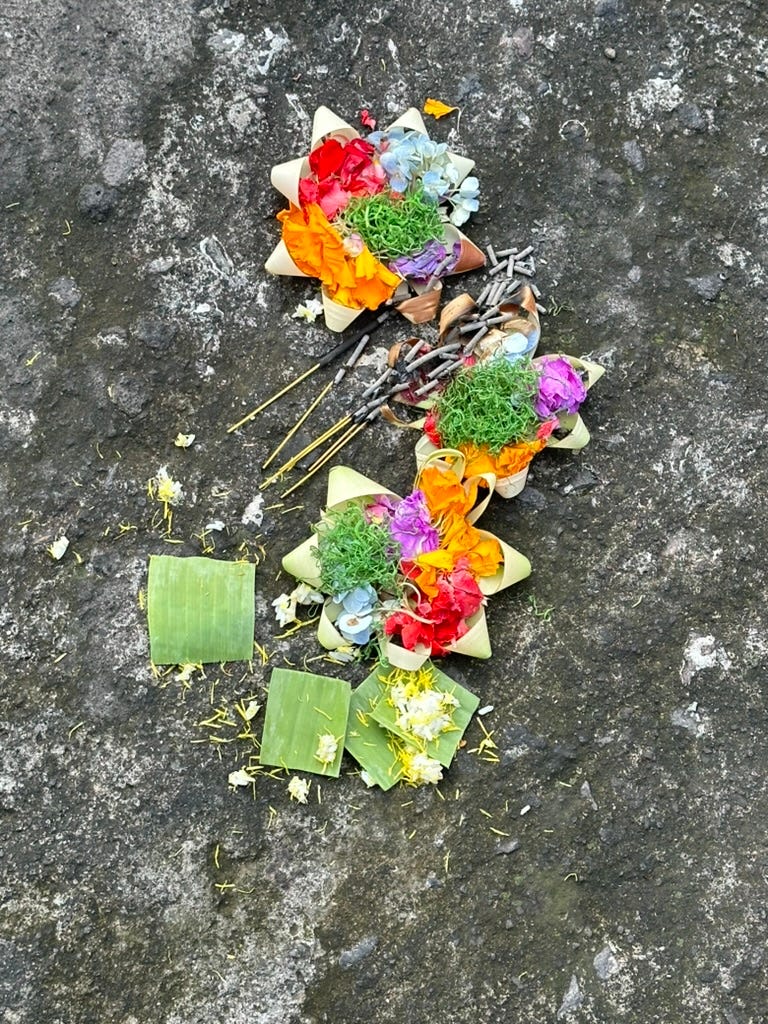
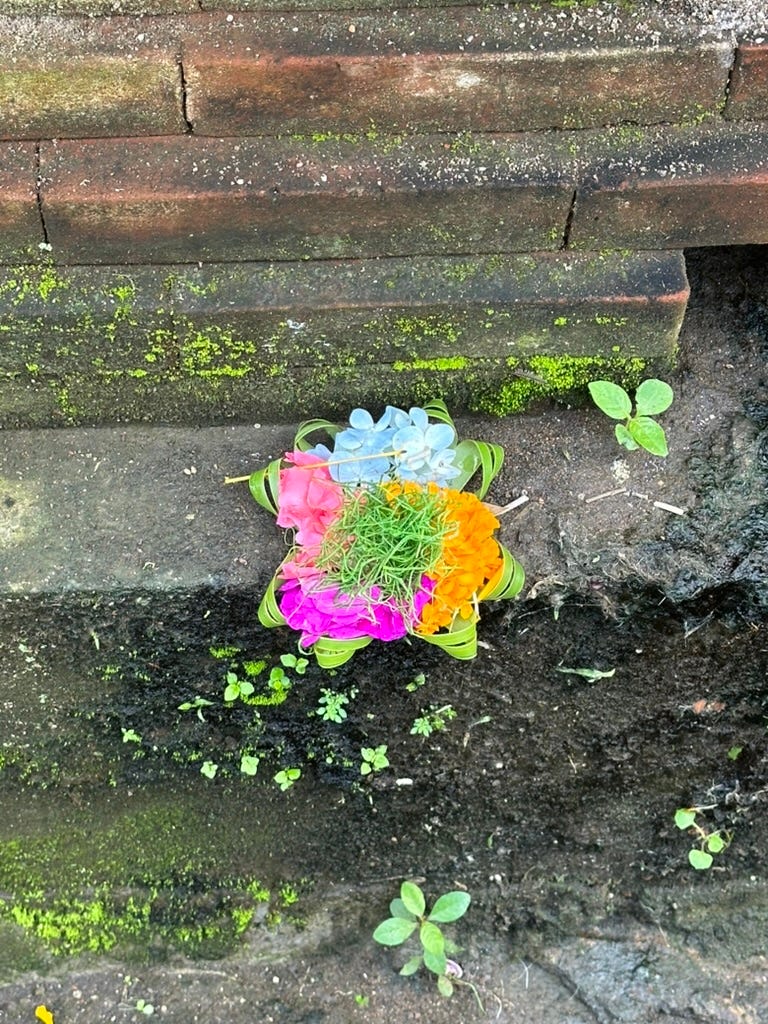
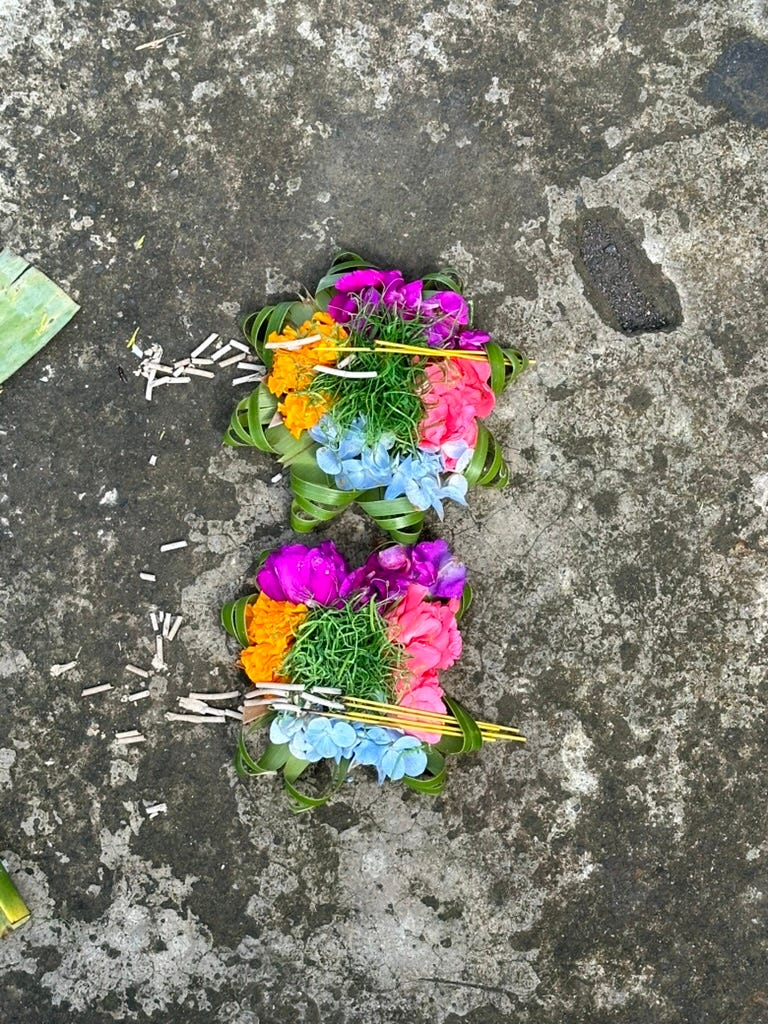
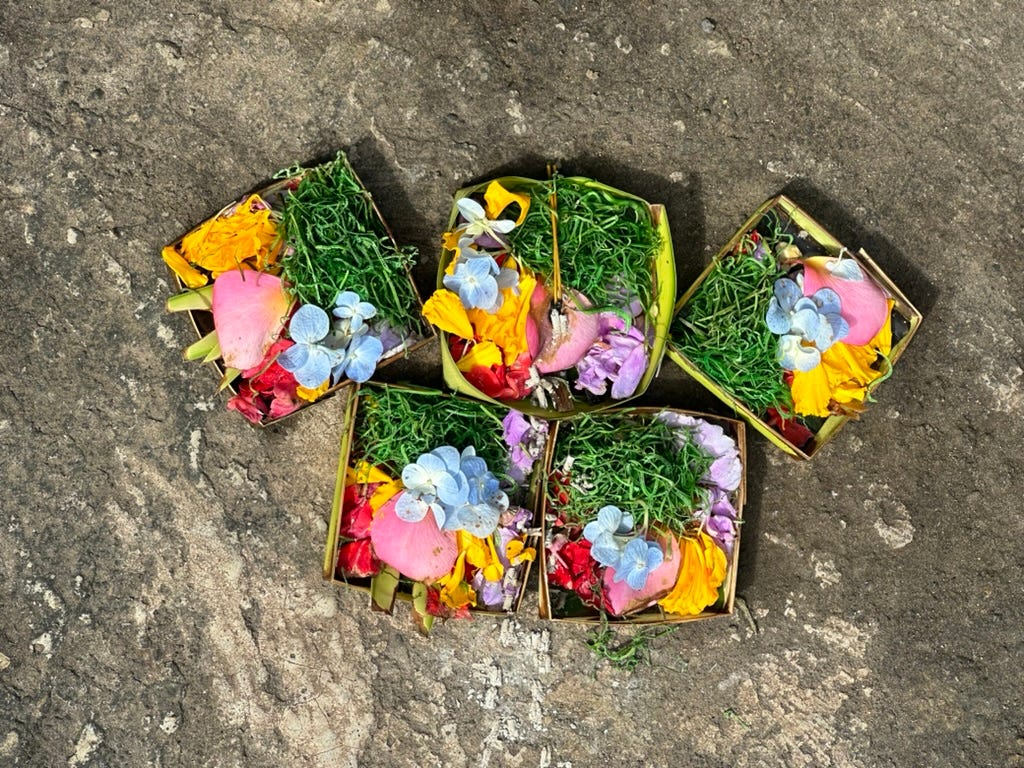
August 11, 2025
When I realized that more than half the group would be arriving at our first hotel early, before the official arrival date for our retreat, I set up an optional class for this morning on the making of Balinese daily offerings, known as Canang Sari.
These offerings are one of the first things you notice in Bali: small, intricate hand-woven baskets brimming with color and life. They’re placed everywhere: on sidewalks, nestled in shrines, resting on shop counters, even sitting on the dashboards of cars. These offerings, made each day as physical blessings, represent a profound and beautiful daily ritual deeply woven into the fabric of Balinese Hindu life.
“Canang” refers to the small, square tray or basket, which Balinese women meticulously weave from janur, young coconut palm leaves. “Sari” translates to essence, core, or gist. Therefore, Canang Sari essentially means “the essence presented in a small palm-leaf tray.”
At its heart, the Canang Sari serves as a daily offering of gratitude and a symbolic act intended to purify the environment and maintain balance in the world. Primarily, it’s a thank you extended to the Almighty God in Balinese Hinduism, for the gifts of life, peace, prosperity, and the harmony of the universe. The offering acknowledges the divine presence woven into everyday life.
Canang Sari serves a dual purpose. While offered upwards in gratitude to the higher powers, Balinese people also frequently place similar offerings (sometimes slightly different in form, called segehan) on the ground. They intend these lower offerings to appease potentially mischievous lower spirits (bhuta kala), keeping them satisfied so they don’t cause disruption or imbalance. This practice reflects a core understanding in Balinese thought: maintaining equilibrium between the positive and negative forces, the divine and the earthly, the seen and the unseen.
Different villages have different offering-making traditions and practices.
Offerings are placed in a variety of locations:
Household Shrines: Small shrines within every family compound receive daily offerings.
Family Temples: More elaborate offerings grace these important spaces.
Community Temples: Daily offerings are vital here.
Entrances: People place them at the entrance of homes and businesses for protection and blessing.
On the Ground: Offerings here, often at intersections, near large trees, bridges, or potentially ‘dangerous’ spots, usually aim to appease the bhuta kala or lower spirits.
Workplaces: You see them on desks, cash registers, and in kitchens.
Vehicles: Small ones often adorn dashboards of cars and scooters for safe travel.
Rice Fields: Farmers make offerings to Dewi Sri, the goddess of rice.
Beaches/Rivers: People make offerings here to deities associated with water.
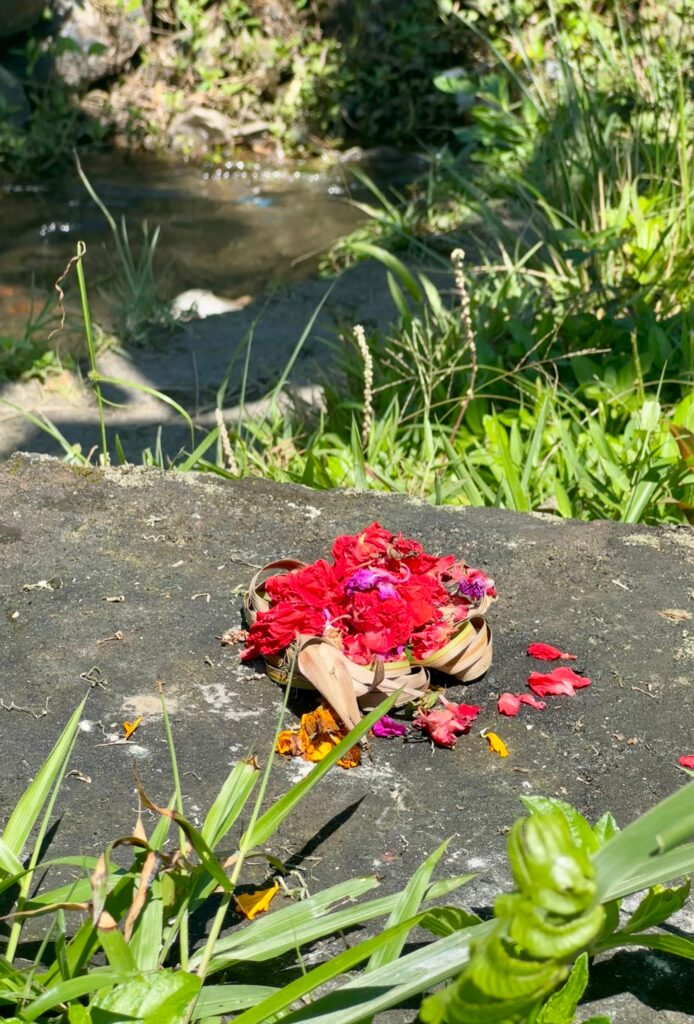
Six of us signed up to take today’s offering-making class. Our teachers were Sri and Ayu.
Our classroom was an open-air pavilion called a bale (pronounced ba-lay). Our writing class will meet here, starting tomorrow.
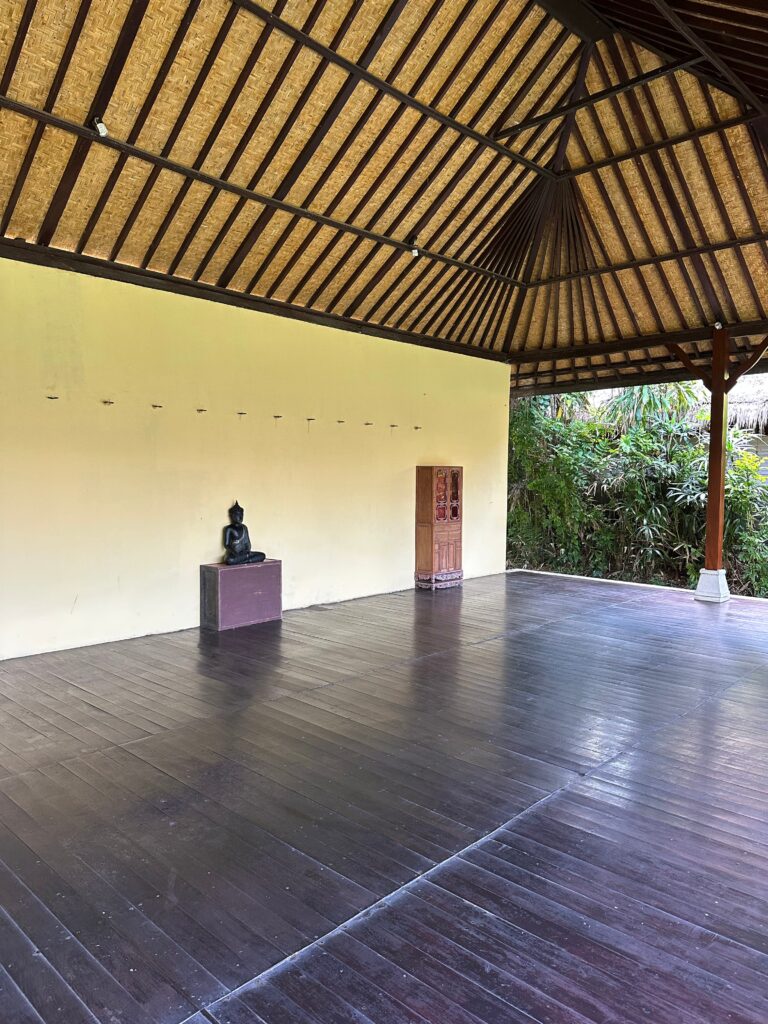
These were the raw materials Ayu and Sri brought in for us to work with. All the materials come directly from nature.
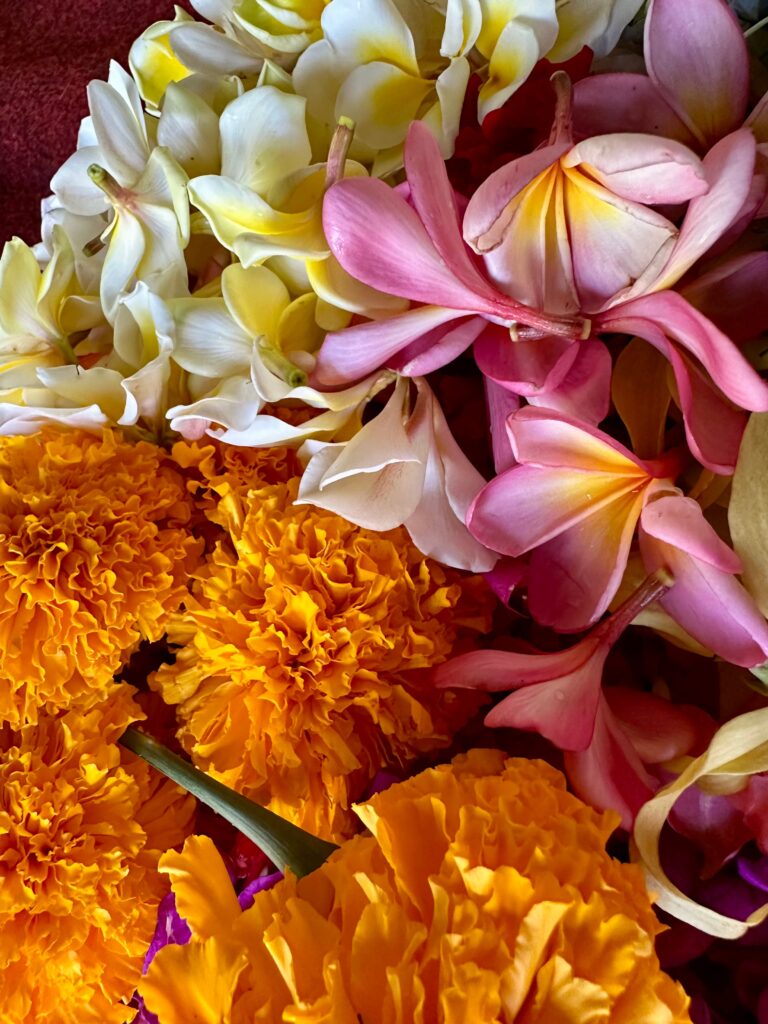
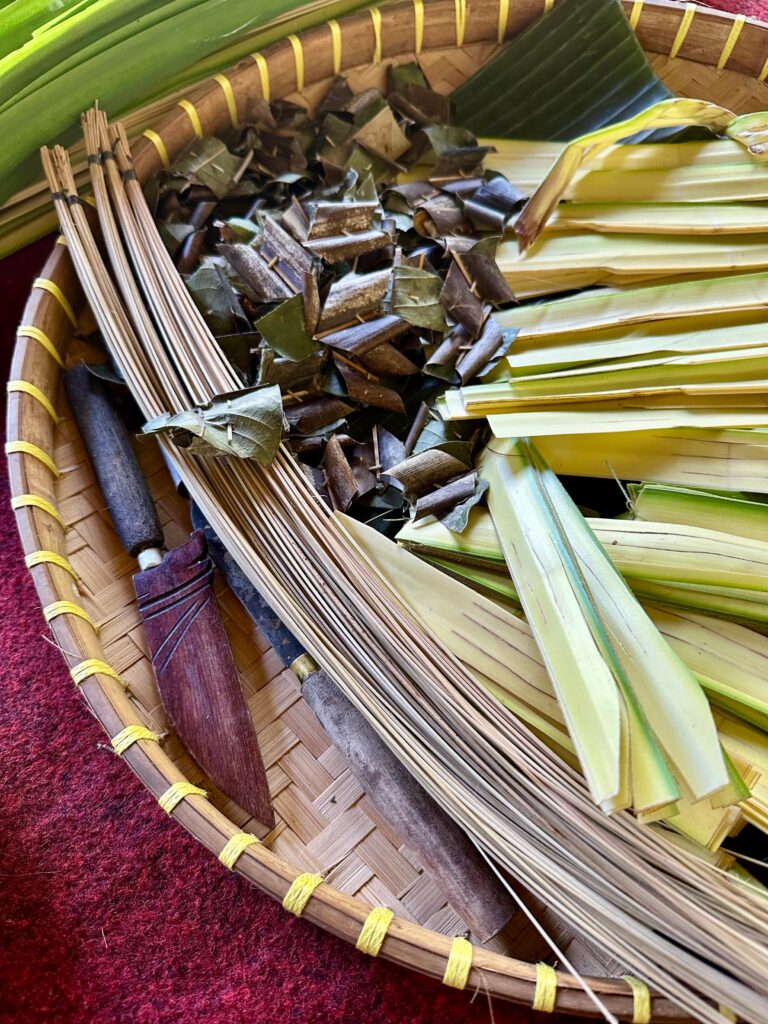
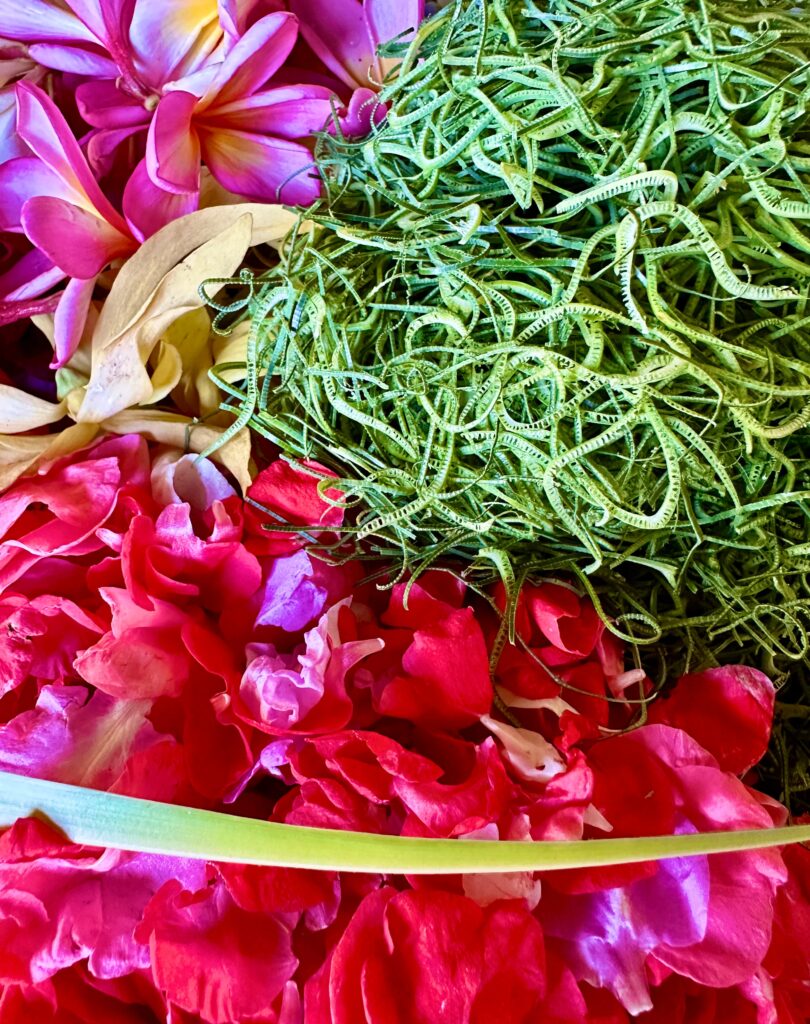
The first things Sri and Ayu did was to wrap each of us in a sarong and temple scarf. Then they tucked flowers behind our ears.
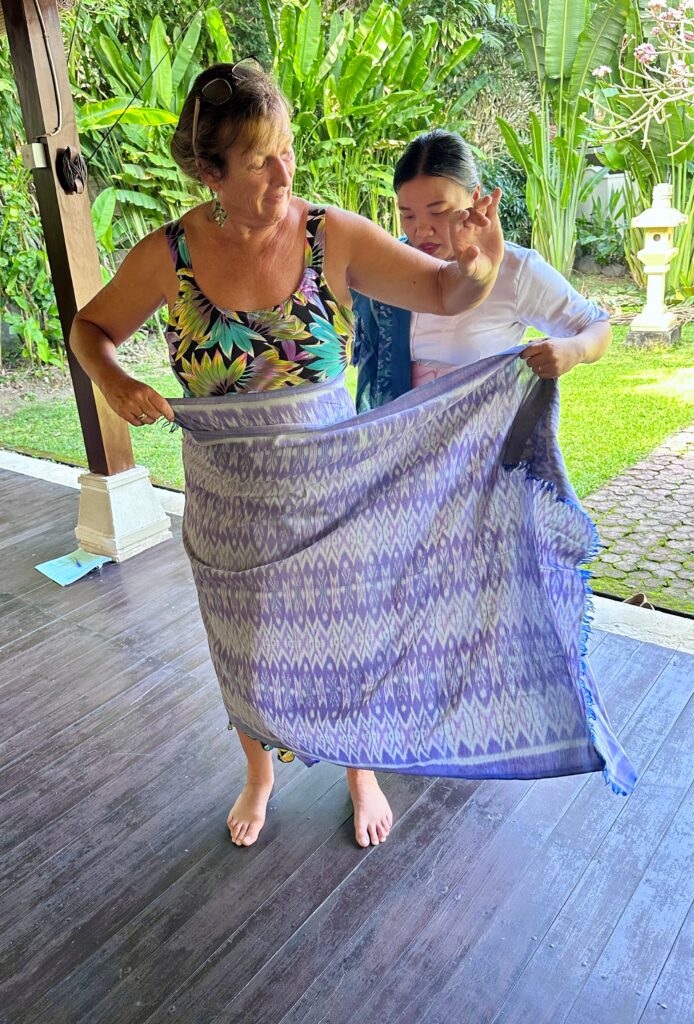
Once we were all properly adorned, they gave us a demonstration of what to do with the young coconut leaves to make the base of the basket.
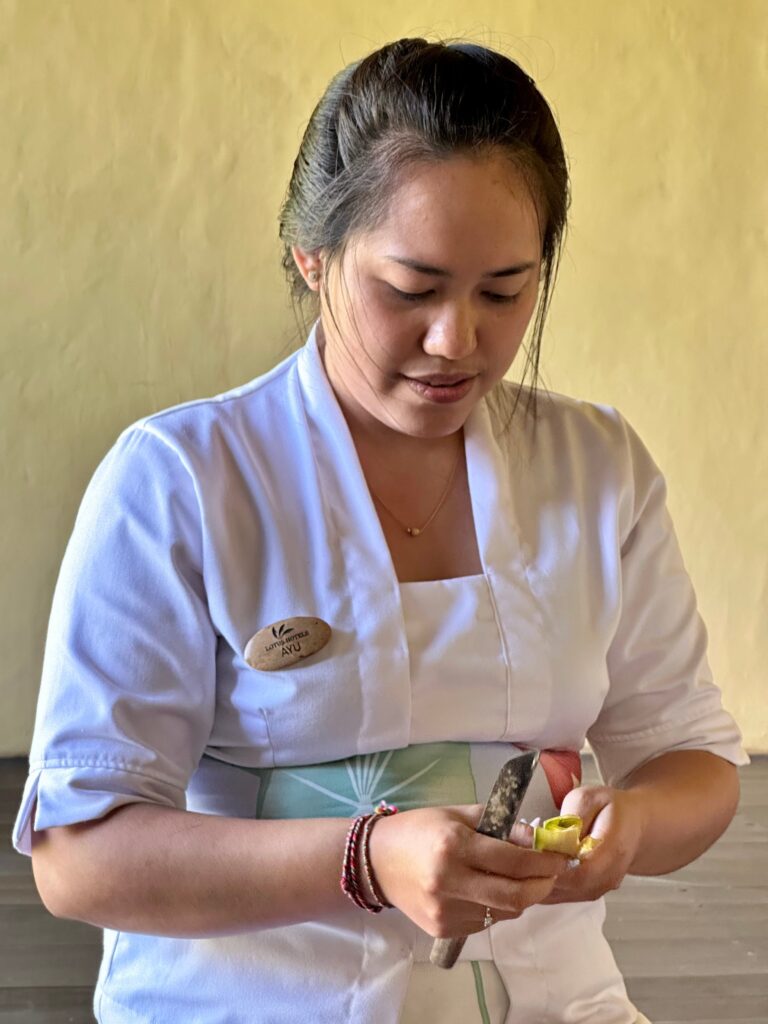
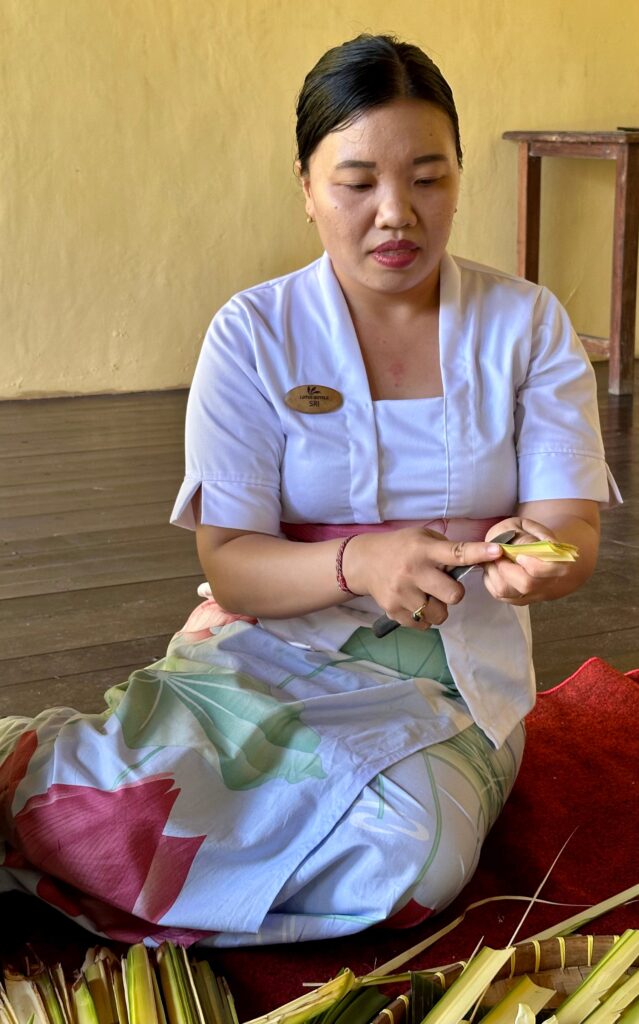
Balinese women make hundreds of these baskets every week and Ayu and Sri’s easy, smooth gestures were seamless. When it was our turn to try, we found it was much harder than it looked. But they were very patient teachers.
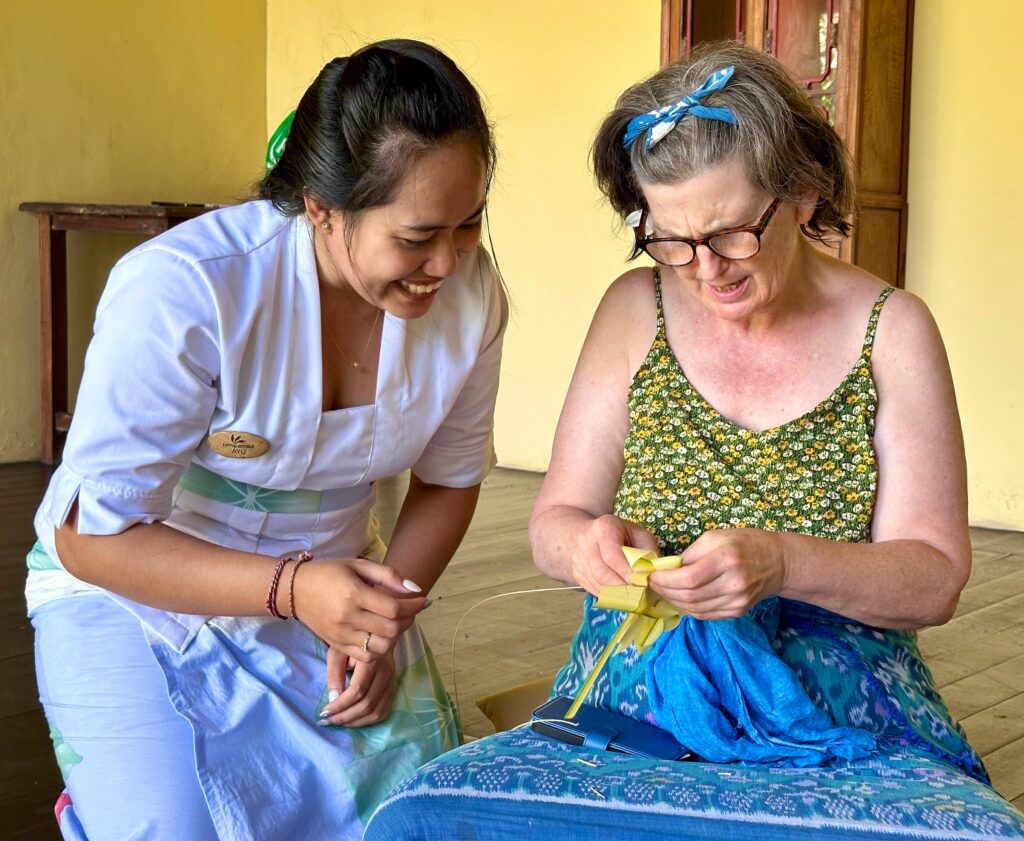
After we’d all made the smaller basket (with lots of help), we learned to make an even more intricate basket. Sri demonstrated how to create the start of the basket.
Then we got to struggle with the folding, pinning and tucking ourselves.

I had to ask for a lot of help and redo my awkward attempts many times. All of our baskets were imperfect and they all looked different. Ayu laughed and said, “Not bad for beginners.”
This was a close-up of my finished result.
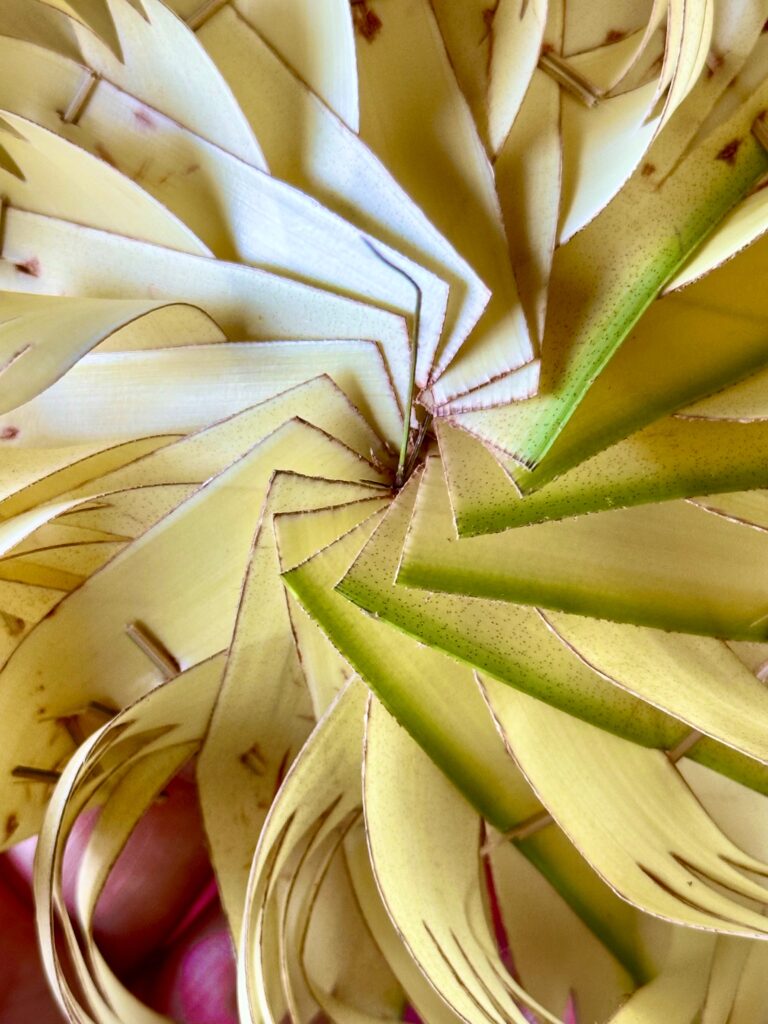
Before filling our baskets, we were told it was time for tea. A few minutes later, they brought out a steaming teapot with six cups and this amazing tray of delectable Balinese treats, mostly sweet, with one savory. They were beautiful and delicious. Having eaten many Balinese desserts over the years, I knew they were made primarily from a few key ingredients: rice flour, coconut, banana, and palm sugar, in many variations.
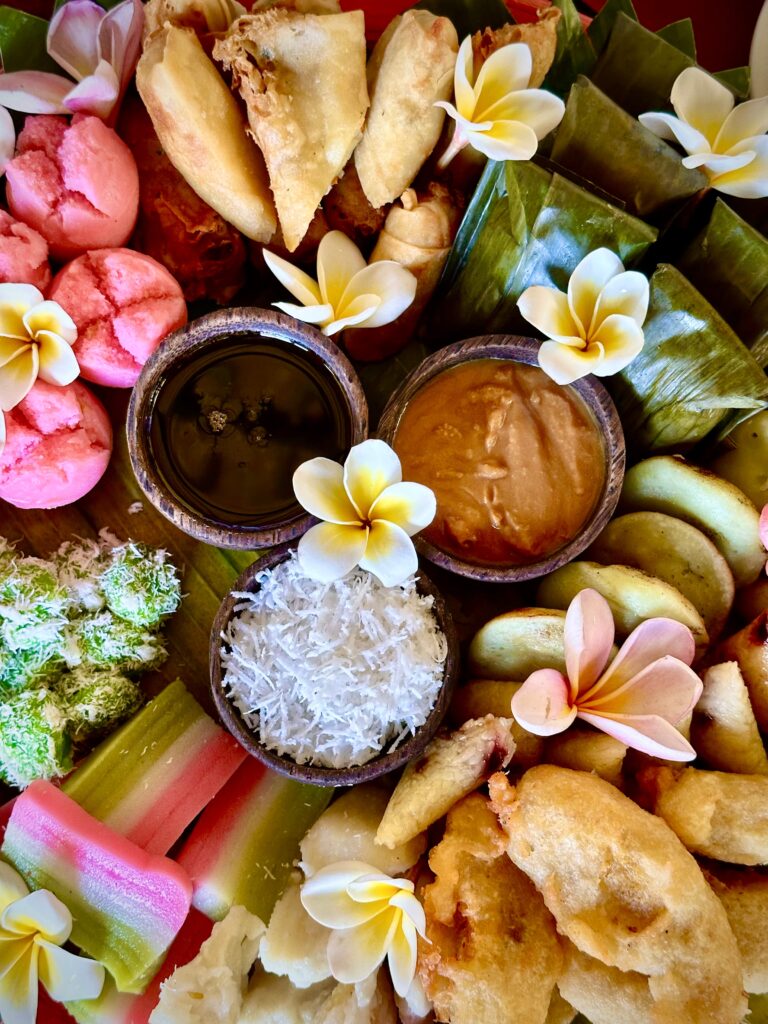
After tea, it was time to fill the baskets we had woven. Offerings in Bali can be filled with many things: flowers, tobacco, bits of meat, incense, rice and other things. It depends on the purpose of the offering, the occasion, and the traditions of each individual village.
We filled our canang sari with flowers. We were instructed which color of flower to use and where to place them in the basket: north, south, east or west. Each color represented a different element: air, fire, water, and earth.
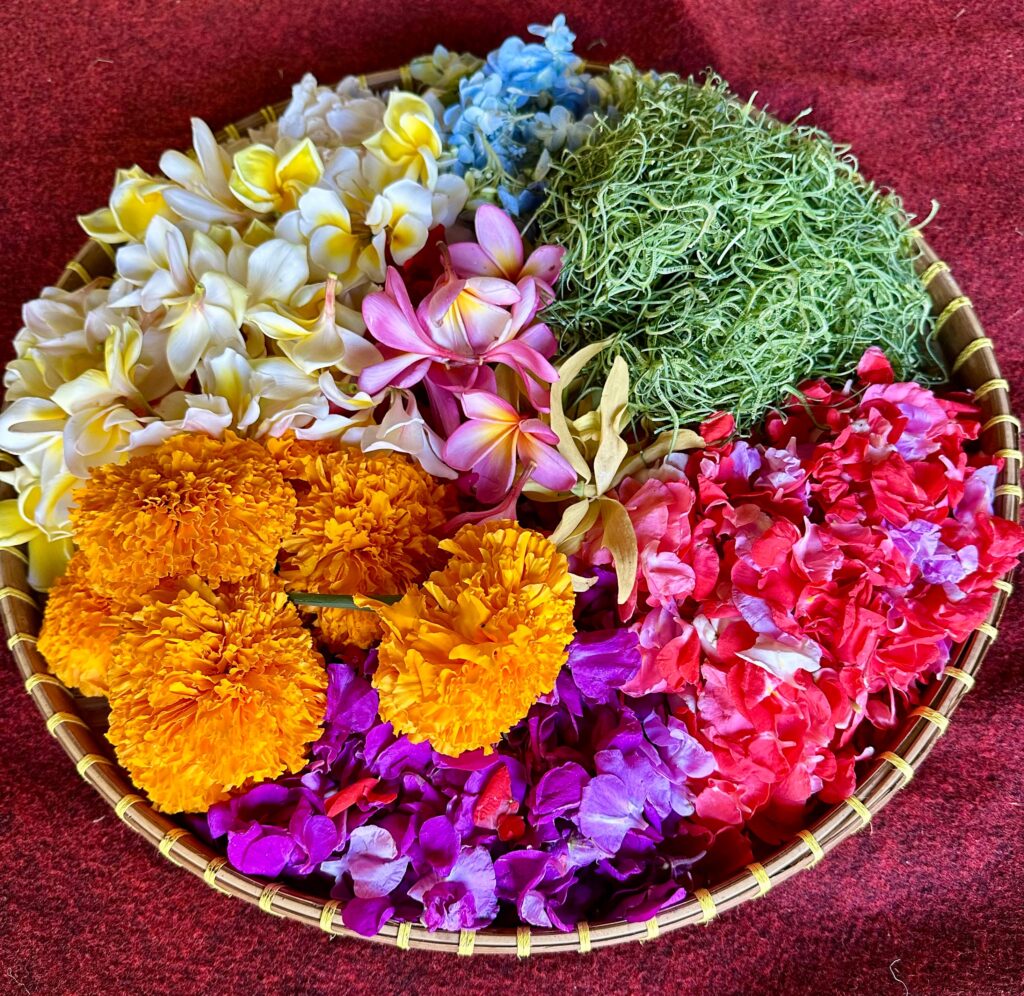
As she passed around the basket of colorful flowers, Sri asked me, “Mrs. Laura, do you need more?” I love that she refers to me that way. It always makes me smile.
Green pandan leaves went in the center of our offerings—to “bless everything.” When I asked how the pile of green had been made, I got a demonstration, and then got to try it myself.
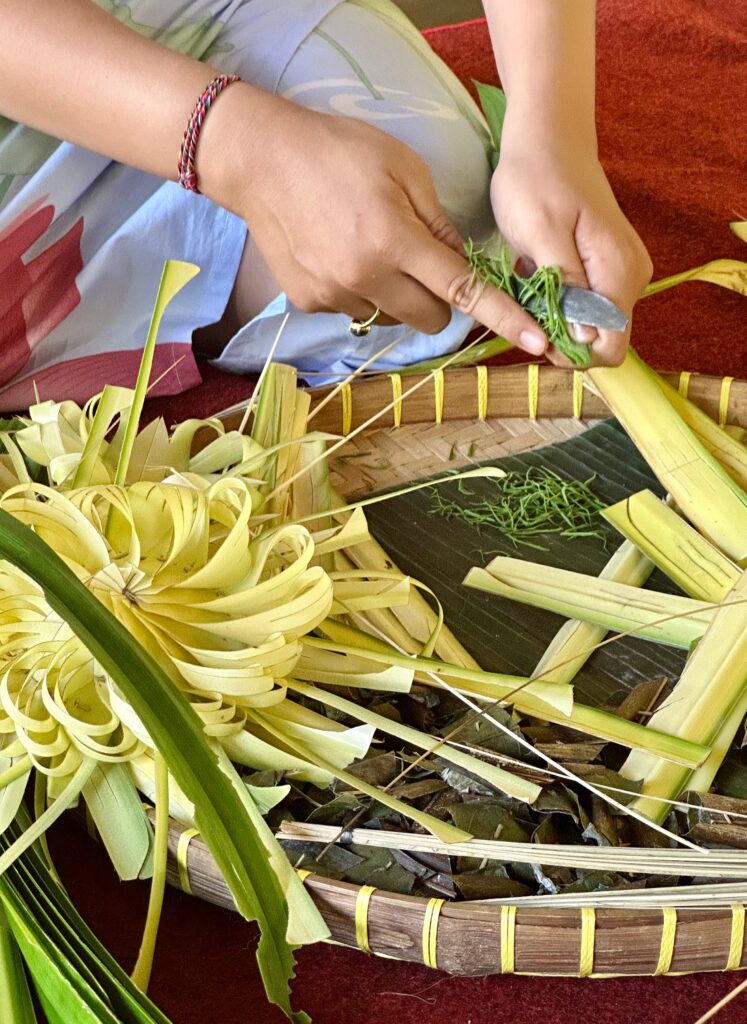
These were my finished canang sari. We were told to carry them to our rooms or put them out on the grounds in blessing.
What a wonderful way to bless the start of our retreat: by creating beauty.
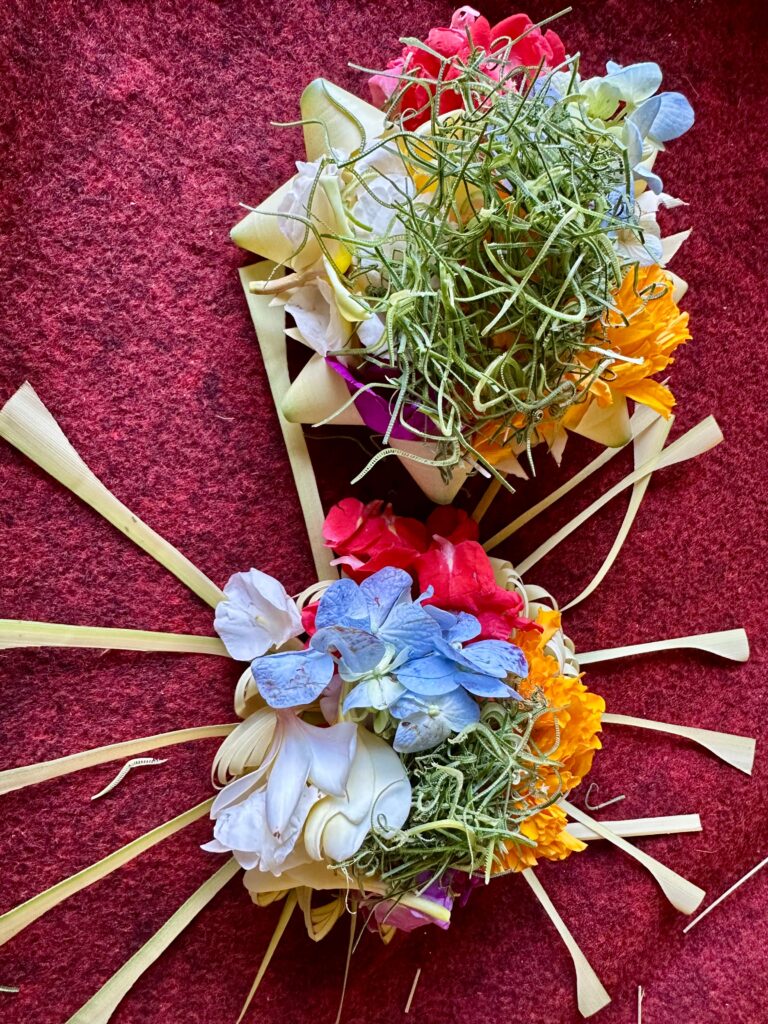
In just a few hours, my co-leaders Judy and Surya, will arrive, along with our last four participants. By tonight, our traveling company of writers will be complete.
We start our day tomorrow with snorkeling and will return for our official opening ceremony and first writing class after lunch.
May the retreat begin!
